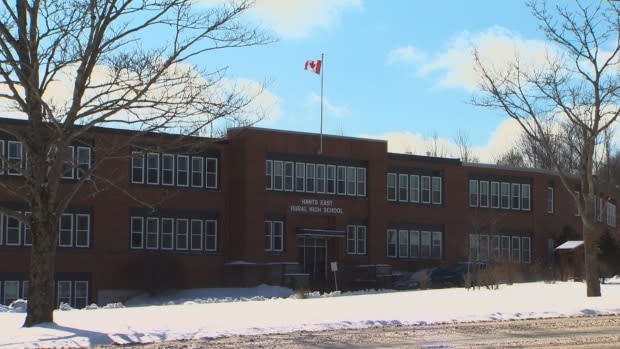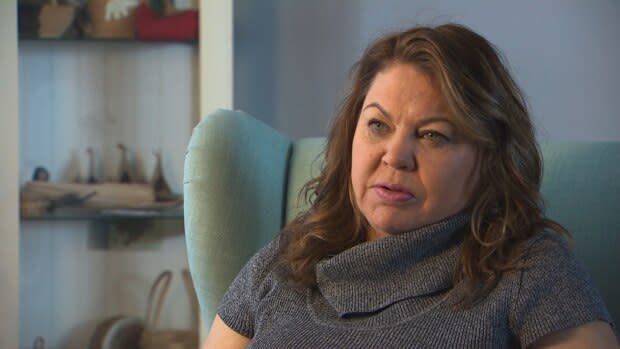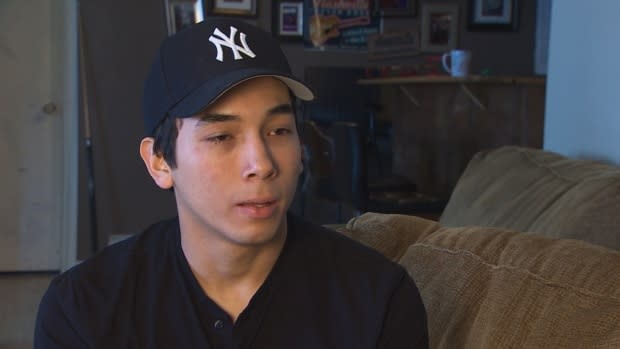'A crisis': Indigenous students at rural N.S. school say they're excessively punished
When Xavier Sack walks through the doors of his high school in Milford Station, N.S., he often feels like he has a target on his back.
The 16-year-old boy from the Sipekneꞌkatik First Nation said he and other Indigenous students at Hants East Rural High feel they are discriminated against when it comes to how they are disciplined by staff.
Sack believes suspensions are the automatic discipline at Hants East, especially when dealing with Indigenous students.
"Some days you feel like you always have to be on guard," he said. "You're always protecting yourself. Some teachers don't understand what we go through, so they don't see how hard it is."
Sack was recently suspended for 40 days for his part in an altercation at the school involving several people, although he said he never physically assaulted anyone.

Data obtained by CBC News through access-to-information legislation shows Hants East handed out 155 suspensions in the 2018-19 school year — the largest number for the 37 high schools in the province CBC was able to obtain data for.
Among those 37 schools, which included the province's 10 largest high schools, Hants East — with 743 students and the 23rd-largest student body — also had the highest per student suspension rate.
The community has a history of racism. Shubenacadie — a village roughly six kilometres from the school — was once home to the Shubenacadie Residential School, where some Mi'kmaw children suffered physical, emotional and sexual abuse between 1923 and 1967.
The children were not allowed to speak their own language or practise their cultural traditions.
Figures provided by the Chignecto Central Regional Centre for Education show 20 per cent of all Indigenous students and 15 per cent of African Nova Scotian students within the regional centre were suspended in the 2018-19 school year.
Self-identified students of Indigenous and African ancestry make up only 10 per cent of the student population within the regional centre, but represented about 17 per cent of suspensions overall, the August 2019 improvement plan said.

The regional centre declined to provide suspension data for the Indigenous student population at Hants East, citing privacy concerns.
Sack recognizes he did something wrong. He said he offered to take part in a restorative justice process and anger management program to stay in the classroom, but he was nevertheless suspended for 40 days.
"I'm going to need school, and the only way I can get back in school is if I learn how to manage my anger," said the aspiring chiropractor who will be going to Shubenacadie District Elementary School twice a week to do homework during his suspension.
Why suspensions can be counterproductive
Dr. Cornelia Schneider, an associate professor in the education department at Mount Saint Vincent University in Halifax, said suspensions should be a last resort for staff because they are often counterproductive.
"Often students who have behavioural issues also have trouble dealing with the content that is offered in the class," she said.
"If you kick them out of the classroom, they might already be significantly behind … so basically with a suspension, you're just making it worse."
Cheryl Maloney, a member of the Sipekneꞌkatik First Nation and a Mi'kmaw advocate, said the province should form a task force to examine why suspension rates for Indigenous students have reached "a crisis."

Maloney pointed to the overrepresentation of Indigenous people in federal prisons, which have reached historic highs.
Indigenous people account for roughly five per cent of the population in Canada, but account for more than 30 per cent of the federal inmate population, up from 25 per cent four years ago, according to the Office of the Correctional Investigator.
"You can save somebody's life by doing something immediate. You can save the future of these children," said Maloney. "We know that they're getting suspended... at higher levels. Then stop doing it."
'Journey of reconciliation'
Gary Adams, regional executive director for Chignecto Central, acknowledges Indigenous students and African Nova Scotian students are being suspended at disproportionate rates.
He said suspensions "are not always effective," adding that staff "are looking to explore their own bias, explore their own strategies and improve upon that data."
"It's part of our journey of reconciliation, if you will, in making sure that together we have deeper understandings, deeper relationships, and an ability to look to other solutions so that the punitive ways of the past are not necessarily the default," said Adams.

He said the school has been working with the community to build stronger relationships. He noted a healing circle was recently held with staff and Sipekneꞌkatik community members.
"Restorative ways of coming together and speaking to lived experience and how that influences actions and decisions is part of the relationship building and the repairing of harm," said Adams.
"Through those raised awareness, teachers are able to call on more appropriate strategies that do reflect a greater understanding, appreciation and respect for the lived experience of their learners."
Suspension rules
Under the Education Act, suspensions longer than 10 days must be approved by the regional centre following a recommendation by the principal.
Although Chignecto Central would not provide details about the length of suspensions at its schools, student Miguel Greer said he feels Indigenous students are handed heavier suspensions than non-Indigenous students.
He said he was suspended on Dec. 4 for the rest of the school year for his involvement in a fight at the school, but a non-Indigenous student involved in a separate fight received a suspension of five days, plus a two-day in-school suspension.
'Sometimes you don't feel safe'
Greer said the discrepancy speaks to the systemic racism that exists at Hants East.
"They're saying that they're improving the school. We don't see any improvement at all," said Greer, who recently posted a video to social media expressing his concerns.
"Not a lot of Native students like to talk about it because it's so hard to get a word out there and to actually have people stand behind you."
Greer also said he feels like Indigenous students are not always taken seriously when they express their concerns to staff at the school.
Both students said the historical wounds in the community have not healed, and although they don't always experience racism in an overt way, they feel systemic racism has led to ongoing tensions within the school.
"It sucks, because sometimes you don't feel safe at school," said Sack.
MORE TOP STORIES


